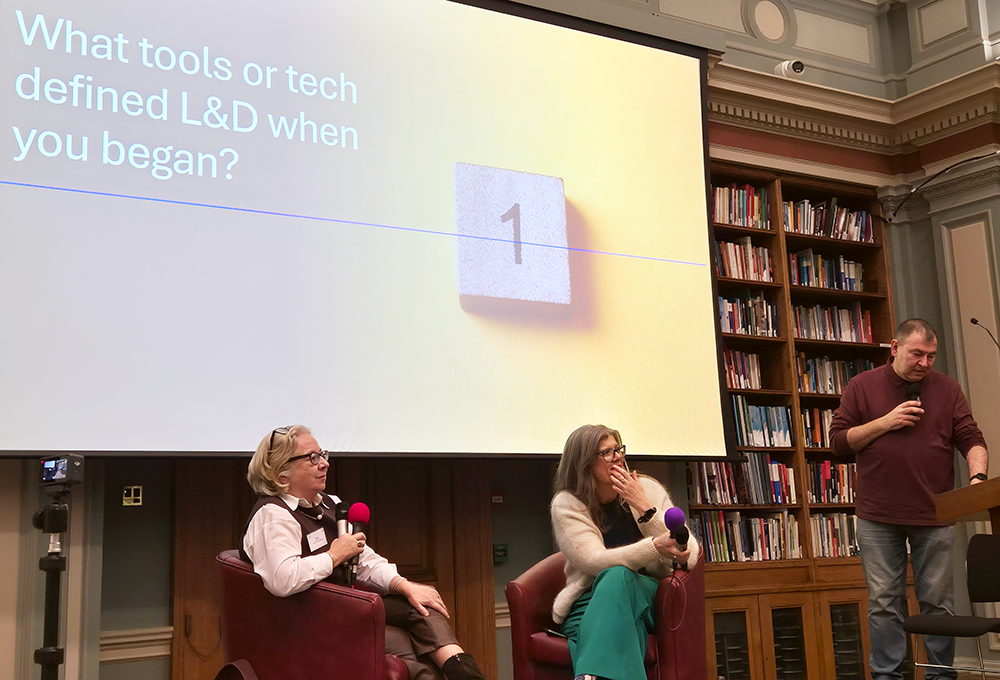As the Festival of Learning’s Have a Go Month draws to a close next week, TJ asks six experts how leaders can create a culture of learning in the workplace
Whilst it is certainly true that a considerable portion of our formative learning takes place while at school, university, college, or in the early years of our careers, this is not where learning ends. We may feel that we are already experts in our roles or fields, however the art of learning should be practised continuously throughout our lives and careers. It is essential to develop new skills and adapt to new ways of working. There is always capacity and necessity to keep learning.
To facilitate lifelong learning; employers need to create a culture that encourages taking risks and developing new skills in a supportive and nurturing environment.
Build a safe culture for learning together
Being open to improvement is at the core of professional growth. Senior leadership must create a culture where employees feel comfortable asking questions and helping others in a constructive and collaborative way. Many of the ways we carry out certain tasks, communicate or respond to work-based pressures are learned over time, so workspaces should be a safe environment for learning healthy habits and unpicking those more damaging ones.
“Knowing that there is always something more that you don’t know no matter how much you study or how experienced you become is humbling. Recognising this will allow you to keep learning”
Lesley Cooper, wellbeing consultant and CEO of WorkingWell says ‘’organisations should be built upon openness and shared learning, where individuals are drawing on each other’s strengths and bolstering the areas for improvement.’’
‘’A psychologically safe culture is one that solves problems collaboratively, spreading the pressure-load across the team and leaning into each individual’s skills. If the culture is psychologically safe, we can learn from each other constructively.’’
Leaders must ensure employees feel safe to be open and share their concerns as well as insights and ideas without fear of negative consequences or ridicule. Leaders and team members have much to learn from each other – wisdom comes from multiple perspectives. Encouraging idea sharing as well as expressing their own vulnerability when it comes to new ideas to set a precedence for open learning conversations.
Promote Mastery
In the modern world of work, Mastery, the sense of being on a continual journey of improvement towards being the best version of yourself you can be, is being neglected. The formal structures for managing collective talent are limiting true development and mastery at work and forgetting that a love of learning should be at the heart of a workplace.
Sharath Jeevan OBE, intrinsic leadership and motivation expert and author of Intrinsic speaks ardently on this, asserting that: ‘’we have created increasingly formal structures for managing our collective talent, from new armies of admissions officers, talent scouts and performance managers, to entrance exams, rankings and structured ‘talent development programmes’.’
He continues, ‘’these systems have fundamentally confused true Mastery with competition – and virtually everyone has been left the poorer for this confusion’’ which has resulted in ‘’the already most proficient and fortunate among us increasingly having access to the best teachers, coaches, training and facilities.’’
The idea of ‘winner takes all’ which pervades the world of business has ‘’led many of us to fall out of love with the activity we are pursuing (whether in school, sports or work) and losing our inner drive, particularly when tough times hit.’’
Leaders must promote a love of learning itself through creating an environment where continuous improvement is celebrated, and employees do not feel they have to compete with each other to already be the ‘best’ in what they are doing. Uniqueness and diversity within organisations should be celebrated.
Recognise your areas for improvement
One of the greatest strengths someone can have is recognising their own limitations. The ability to admit where we have gone wrong and areas we could improve unlocks our potential to further ourselves continuously. We cannot be experts in everything, and we cannot be experts in anything without learning.
Julio Bruno, global CEO, investor and author of Passion to Lead says: ‘’‘Scio me nihil scire’ (I know that I know nothing) is often viewed as the Socratic paradox. In other words, if you are able to recognise your own ignorance, then you are wiser than most.’’
‘’Knowing that there is always something more that you don’t know no matter how much you study or how experienced you become is humbling. Recognising this will allow you to keep learning for the rest of your life.’’
Recognising your areas for improvement can fuel curiosity. Bruno describes this as ‘’like a fire inside of you that propels you to want to know more and improve, allowing you to imagine new possibilities without thinking of any limits. Forget about thinking outside the box, but think like there is no box’’
Leaders can create a culture that nurtures perpetual learning by showing others that recognising their areas for improvement means they can enhance their performance in the long term, benefiting not only themselves but their team and organisation at large.
Celebrate learning through being the example
The willingness of staff to learn and develop professionally is key to their own career success and vital to the growth and profitability of their organisation. Yet, a learning culture, only able to be built over time, remains the exception and not the norm amongst organisations. With rapid technological advances, learning has become ‘virtually’ accessible, creating new learning curves such as ‘microlearning.’ Yet, there remains a gap between staff wanting to acquire new skill sets and actually making it happen.
Celebrating learning is vital, and this should be led by management and leadership. The learning culture is established and perpetuated when the staff sees that management is driven to learn, encouraging professional development in every facet of the organisation.
“Ongoing learning begins with creating an atmosphere that makes time for employees to learn, and successful companies have made learning part of the daily workflow. Management that is eager to learn and regularly does training sets the example. The fact remains, your team is watching your moves as a manager and following in your steps,” says Anna Stella, CEO of global outsourced agency BBSA.
In setting the example, management can set a learning or development budget that is accessible to staff and mandatory for small and big companies.
Invest in knowledge management
To be able to build a culture of continuous learning, first you have to consolidate what you already know. There is so much existing yet unrecorded knowledge present across your organisation that could be used to upskill teams before you even consult external training sources.
To be able to harness the power of this knowledge within your business, Angus Gregory, CEO of Biomni, says automated and centralised knowledge management is key. “Without a process-driven knowledge management system, people being able to learn from each other can be left to chance” he says. AI-driven, low-code systems can facilitate these processes and create intuitive, searchable databases.
Gregory argues: “Now more than ever in our hybrid working world it is essential leaders invest in easily accessible knowledge management systems. By crowdsourcing to populate this resource, teams can actively learn from each other’s experiences. Then appoint knowledge management moderators to spread the responsibility of overseeing the system across the organisation.”
“When leaders invest in knowledge management, it is clear that they value continuous learning and working together to expand each other’s understanding,” he says.
Expand learning horizons
Traditionally, learning in the workplace has been mostly about structured, formal training courses or qualifications. But this one-size-fits-all idea will not maximise the breadth of learning opportunities at your disposal or get the most out of your people. Instead, Christy Kulasingam, business strategist and founder of In•Side•Edge argues organisations need to expand their understanding of ‘learning opportunities’.
“Everyone learns in different ways. The bouquet of learning opportunities you curate should reflect this. Shadowing, mentoring, and stretch assignments are all options alongside widely used options like classroom learning and webinars. Peer-to-peer learning ‘across borders’ could be created between like-for-like organisations, across mature businesses and start-ups, or corporates and elite sports persons,” he says.
Whatever the opportunity, architect it first. Don’t just bring in an expert speaker for a stand-alone session without careful designing. “Host a briefing / rehearsal session to establish connections with the speaker and moderator, conduct a pre-event audience survey so the event covers exactly what they want to learn, build in ample Q&A opportunities, and then create follow up events using feedback. Many organisations lose out on true benefits by putting a one-time event on and forgetting all about it. Continuous learning experiences that are heavily influenced or driven by the audience will create better value for the individual and greater payback for the organisation,” says Kulasingam.



